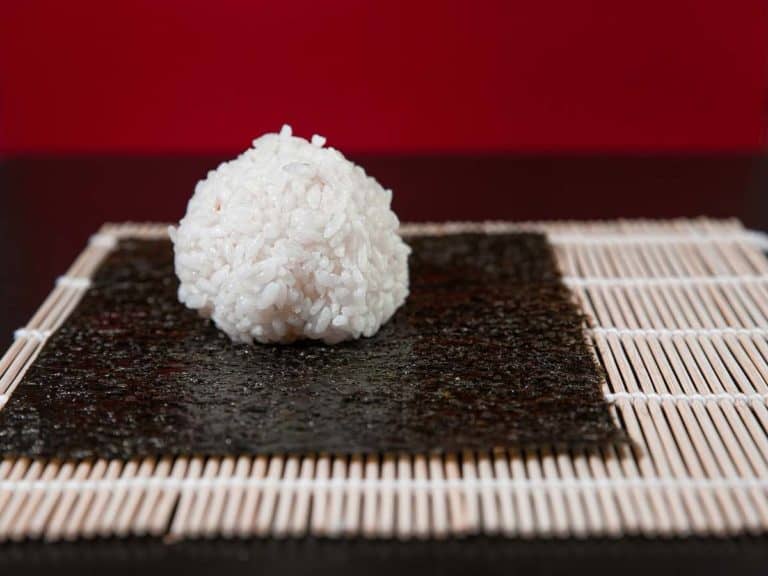How To Safely Store Fish: Cooked and Fresh
Handling leftovers have always been an exciting kitchen task, and it is more challenging, especially in the case of high-perishable foods like fish. It’s either you need to cook or freeze it right away to avoid spoilage. After the fish is cooked, you’ll be able to store it for a few days, but the question is how?
Once your fish is cooked, put it into the refrigerator (below 40°F) to extend its shelf-life. The fish must go into the fridge within two hours, or as soon as it cooled down enough to handle proper packing and storage. It will cool faster if you divide it into tiny portions for packaging.
Keep in mind that your fish will always at its best and safest state if it is handled properly from the beginning.
Start by buying the freshest fish you can get in the market, and keeping it cold until you get home and put it in the fridge.
If you store it uncooked in the refrigerator, the fish will still keep of good quality for a day or two, but the sooner you cook it, the better, especially if the fish you bought is already near to its sell-by-date.
To know more about the safety storage handling of cooked fish here is some information you need to know.
How Long Will Cooked Fish Remain Fresh?
According to the Food and Drug Administration (FDA), you can store cooked fish for about three to four days inside the refrigerator. Well, that’s just a rough estimate though.
It is not safe to assume that your refrigerator keeps a steady, food-safe temperature of 40 degrees Fahrenheit or below all the time.
Ideally, it is somewhere around 36 to 38F, which is low enough to prevent bacterial growth.
Aside from inconsistent storage temperature, another source why perishable items are prone to spoilage is due to oxidation.
Oxidation is responsible for the pungent odor that is common in spoiled food. Oxygen in the air reacts with the protein, fats, and flavor molecules found in the fish, causing nasty-tasting compounds to form over time.
Fats are significantly more prone to this; therefore, fattier fish such as herring, trout, tuna, and mackerel might get musty more quickly than lean fish like cod and haddock.
However, the rule of three to four days only applies to fresh or previously frozen fish that is cooked right away.
Usually, fish is cured first before cooking or just part of the cooking process, which means it has been salted and subjected to smoke.
Salt helps in protecting the fish from bacterial growth while smoking helps in preventing oxidation; therefore, cured fish products can last longer in your fridge than having a cooked fresh fish.
A smoked salmon, for instance, can last for a week in the refrigerator.
Here is a table to show the different shelf-life of cooked fish in the refrigerator.
| CONDITION | SHELF-LIFE |
|---|---|
| Baked fish | Two to three days |
| Smoked fish | Up to three weeks |
| Cured fish | Up to three weeks |
| Cooked fish | Two to three days |
| Thawed fish | No more than two days |
How To Store Cooked Fish In The Freezer
If you have cooked more fish and you failed to eat them in a couple of days, the best option for long-term storage is your freezer. Instead of three to four days, your fish can last longer and usable for three to four months, if kept properly in the freezer.
To achieve this, the packaging is the key. Your fish must be packed in an airtight container as possible, freezer bags with excess air must be squeezed out, or if you put in containers with plastic wrap must be pressed tight up to the surface of the food.
The food stays safe and longer in the freezer; therefore, there’s an indefinite shelf-life on how long it will last and still taste great.
Again, the oxygen present in the air will cause the fish to deteriorate; hence, one best possible solution to solve this concern is by investing in a vacuum sealer, which extracts most of the air from a storage bag.
You may check my post about the best vacuum sealer. Vacuum-sealed foods can last much longer before it develops unpleasant flavors.
Since the essential technique to store cooked fish much longer is by keeping it adequately fresh at the beginning. Hence, here are some tips on how to store fresh fish at the refrigerator so that by the time you want to cook it, the fish will remain fresh.
Storing Fresh Fish At Home

Fresh fish is expensive and is one of the most perishable food items you eat. It is advisable to cook fresh fish within two days after you brought it home.
If the fish is lean like cod, bass, and halibut, you get an extra day to make the most of its flavor. If the fish contains high-fat content, such as tuna, sardine, herring, eat it today; otherwise, it won’t get better tomorrow.
Either you bring the whole fish or filleted fish at home from the market and cook it, or store it for other day use, keeping it properly in the refrigerator is a must.
Doing it properly is simple, but it would help if you use a little equipment. If you don’t plan to cook and eat the fish within a couple of days of purchase, freeze the fish.
Here are some ways on how to store fresh fish properly:
Storing Fresh Fish On Ice
Even though you keep it in the refrigerator, fresh fish needs to be held on ice.
That’s why you see fish is displayed on crushed ice in the market since fish rot quickly, even in the fridge, unless you keep it with ice.
Fish swim in water that is colder than air, usually a lot colder. They have evolved to live in water that is just above the freezing level. Warm air will increase the speed at which the fish will spoil.
The best way to store fresh fish in the refrigerator requires a cooling rack, which can fit inside a sizeable shallow container such as a roasting pan. It needs to be a grid or mesh design with a lot of openings.
If the rack does not have legs, look for a way to elevate it inside the large container. No worries, if you don’t have one since you use another box and just punch several holes in it to drain the fish.
Here are the steps on what to do, when you bring fresh fish at home:
Wash the fish
Take the fish out of its store packaging, and then rinse it under cold water. Use paper towels to dry the fish.
By doing this, it helps in washing away bacteria that may come in contact with the fish on the way home. Carefully packaged fish should be free of leaks and juices.
Set up the rack
Place the fish on the rack. Make sure that the fish does not touch or overlap. Set the rack with fish inside the large container.
Place some crushed ice in the large container, make sure that the ice level falls just beneath the fish. Remember not to let the ice touch the fish on the rack.
Place fish in an airtight container
Fresh fish can stink in your whole refrigerator if not correctly sealed.
To do this, you may wrap it properly in an aluminum foil or use an airtight container to prevent it from contaminating the rest of the food items stored in the refrigerator.
If you store the fish for more than a day or two in this method, replace the ice as it melts and pours off the water.
Freezing Fresh Fish
If you don’t plan to cook and eat the fish on the day, you bought it, freeze it instead.
Wash the fish
Take the fish out of its store packaging, and then rinse it under cold water. Use paper towels to dry the fish.
Place it in the container
Place the fish in freezer bags or containers. Just do the above step on how to seal the fish properly in the container. Put a label and date on the bags or containers.
Put fish in the freezer
Put the sealed fish in the freezer and set it at zero degrees or colder.




![How to Store Quinoa [Tips, Tricks, Science]](https://foodwine.com/wp-content/uploads/quinoa-1770436205-768x576.jpg)
